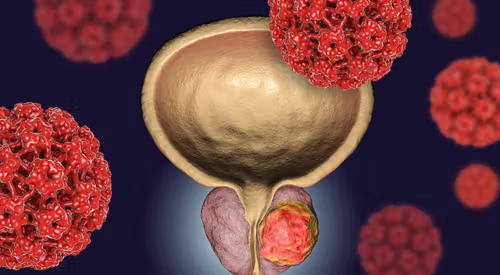14 February 2025 | Friday | News

Picture Courtesy | Public Domain
Pfizer Inc. announced positive results from the Phase 3 TALAPRO-2 study of TALZENNA® (talazoparib), an oral poly ADP-ribose polymerase (PARP) inhibitor, in combination with XTANDI® (enzalutamide), an androgen receptor pathway inhibitor (ARPI), demonstrating a statistically significant and clinically meaningful improvement in overall survival (OS) compared to placebo plus XTANDI in patients with metastatic castration-resistant prostate cancer (mCRPC), with or without homologous recombination repair (HRR) gene mutations. The TALAPRO-2 results will be presented at the American Society of Clinical Oncology Genitourinary (ASCO GU) Cancers Symposium in San Francisco and featured in the ASCO GU official Press Program.
The TALAPRO-2 study evaluated two sets of patients, unselected (cohort 1) and selected for HRR gene-mutations (cohort 2). Overall survival was a prespecified, alpha-protected key secondary endpoint. After more than four years of median follow-up (52.5 months), the median OS in cohort 1 was 45.8 months with TALZENNA in combination with XTANDI, and 37.0 months with XTANDI and placebo (Hazard Ratio [HR] of 0.80; 95% Confidence Interval [CI], 0.66-0.96; p=0.015), representing a 20% reduction in the risk of death. This represents a nearly 9-month gain in median OS versus standard of care XTANDI. Data from cohort 1 will be presented today at ASCO GU in an oral presentation (Abstract LBA18) by Dr. Neeraj Agarwal, global lead investigator for TALAPRO-2.
In Cohort 2, a statistically significant and clinically meaningful improvement in OS was observed in patients with HRR-mutated mCRPC. At a median follow-up of 44.2 months, the median OS was 45.1 months with TALZENNA in combination with XTANDI, and 31.1 months with XTANDI and placebo (HR of 0.62; 95% CI, 0.48-0.81; p=0.0005), a 38% reduction in the risk of death. This result represents a 14-month gain in median OS versus standard of care XTANDI in a patient population with a historically poor prognosis. The OS improvement in the HRR-mutated population was observed in patients in both BRCA and non-BRCA gene alterations. Dr. Karim Fizazi, Institut Gustave Roussy, University of Paris-Saclay will share data from Cohort 2 at ASCO GU today (Abstract LBA141).
“Since its approval, TALZENNA in combination with XTANDI has redefined the standard of care for those living with homologous recombination repair gene-mutated mCRPC. These latest data from TALAPRO-2 are extremely compelling, demonstrating that the combination significantly extended overall survival, in patients selected and unselected for HRR gene alterations, potentially shifting the treatment paradigm for all men living with mCRPC,” said Roger Dansey, M.D., Chief Oncology Officer, Pfizer. “Although definitive conclusions cannot be drawn across studies, these results appear to represent the longest median overall survival reported in a randomized, controlled Phase 3 trial in mCRPC. We look forward to continuing to work with global authorities to potentially update the TALZENNA label with these results.”
“TALAPRO-2 is the first study demonstrating a significant and clinically meaningful survival benefit using a combination of PARP and androgen receptor inhibitors in mCRPC,” said Neeraj Agarwal, M.D., FASCO, Professor and Presidential Endowed Chair of Cancer Research at Huntsman Cancer Institute, University of Utah, and global lead investigator for TALAPRO-2. “Survival rates in metastatic castration-resistant prostate cancer are poor due to the advanced and aggressive stage of the disease. Today’s results demonstrate the potential for TALZENNA in combination with XTANDI to be a practice-changing treatment to help improve patient survival in mCRPC.”
At the time of the final analysis, updated radiographic progression free survival (rPFS) and other secondary efficacy endpoints demonstrated maintained clinical benefit in both cohorts and were consistent with the primary analyses previously reported and published in The Lancet and Nature Medicine .
In addition to the FDA, these data have been shared with the European Medicines Agency (EMA) and other global health authorities to support potential updates of the approved labels for TALZENNA.
The safety profile of TALZENNA plus XTANDI was generally consistent with the known safety profile of each medicine. The most common all-cause adverse events in the TALZENNA group (≥30% of patients) were anemia, neutropenia, and fatigue, and the most common (≥10% of patients) grade 3–4 adverse events were anemia (49%) and neutropenia (19.3%). Adverse events were generally manageable with dose modification and supportive care.


© 2025 Biopharma Boardroom. All Rights Reserved.